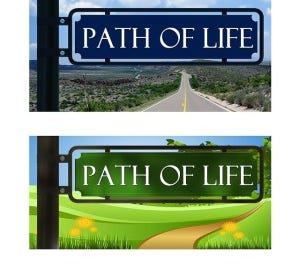The Dilemma of Career Choice for Young Adults
In the past, many young people followed the paths of their parents.
The Dilemma of Career Choice for Young Adults
I remember my days as a Young Man just out of college. I was still deciding what I wanted to do. I was interested in teaching, and to earn some income, I became a substitute school teacher as a temporary measure. I then returned to graduate school, earned my master’s degree in education, and became a history teacher. At first, I found it interesting and rewarding, and I enjoyed working with the young people.
But I soon knew it was not what I wanted to do for the rest of my life. However, I was leaning in two directions. One of them was to pursue a career in education as a teacher. The alternative was to study psychology. Ultimately, I returned to school while working as a teacher during the day, earning a master’s degree and a Ph.D. in social psychology. I then got my certification as a psychoanalyst.
After that, I worked in Mental Health, which I’ve been doing for 45 years. So, I was undecided, and that was back in the 1970s. For young people today, it is even more confusing. The world has become that much more complex. Also, young people need a strong, unified family that they can rely upon. And so, as they face the future, they need clarification.
As Erik Erikson stated in his eight stages of psychosocial development, "The main task of adolescents is to solve the identity versus role confusion crisis." That has a lot to do with making a career choice.
Deciding about one’s career path is a significant and daunting task many young people face. The complexity and difficulty of this process stem from various factors encompassing personal, societal, and environmental influences. In this reflective essay, I will delve into the multifaceted nature of why it is challenging for young individuals to make informed career choices in today’s world.
One of the primary reasons young people need help to decide on a career path is the vast array of options available. Many career opportunities spanning different industries, specialization areas, and job roles exist today. This plethora of choices can overwhelm and confuse individuals, making it challenging for them to narrow down their preferences and make a well-informed decision. The fear of making the wrong choice and the pressure to select a path that aligns with societal expectations further complicate this decision-making process.
Moreover, the rapidly developing job market and technological advancements add another layer of complexity to the career decision-making process for young adults. The shifting landscape of industries and the emergence of new job roles create uncertainty about which careers will be in demand. This uncertainty can deter young people from committing to a particular career path, as they fear their chosen field may become obsolete or saturated when entering the workforce.
Additionally, societal and parental expectations significantly hinder young individuals from making autonomous career choices. Many young people feel pressured to pursue careers deemed prestigious, lucrative, or socially acceptable by their families and society. This pressure can influence their decision-making process and lead them to prioritize external validation over their interests, passions, and values.
Furthermore, the lack of exposure to diverse career options and limited access to career guidance and mentorship exacerbate young people’s challenges when making career choices. With proper information and guidance, individuals can explore various career paths, understand their strengths and interests, and make informed decisions about their future.
In the past, young people found guidance through several traditional ways when making career choices. One important way was apprenticeships and mentorships. Young people would learn trades and skills by working directly with experienced craftspeople or professionals within their community. This exposed them to different careers and the knowledge for those jobs while building important connections.
Another factor was family. Many young people followed the paths of their parents or relatives, entering similar professions or taking over family businesses. This offered familiarity, established support, and a level of job security.
Career paths were traditionally more clear-cut and predictable. Joining a company meant the possibility of working your way up a defined ladder. This made career choices easier, as young people could envision their potential progress.
Close-knit communities also played a role. There was a greater awareness of local jobs and opportunities. Young adults might hear about openings through word-of-mouth or even secure positions based on personal recommendations within their community.
Finally, schools emphasized practical skills and vocational training. This focus helped students transition directly into trade-based or skill-specific careers.




